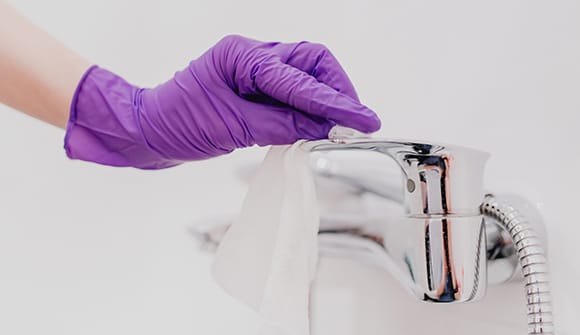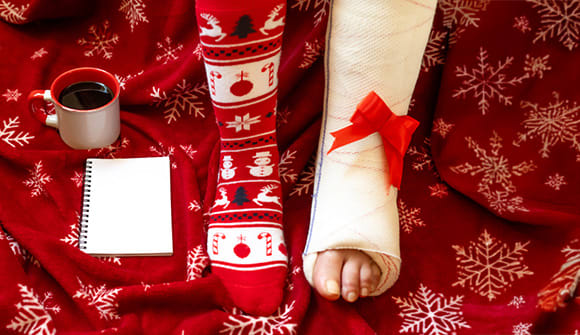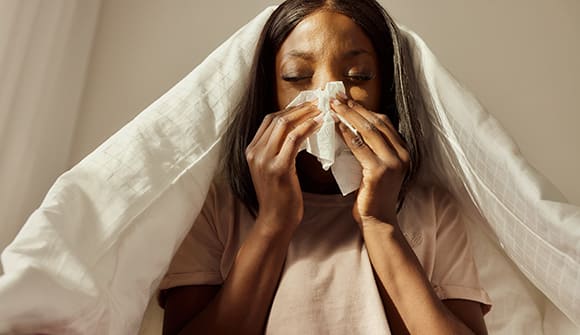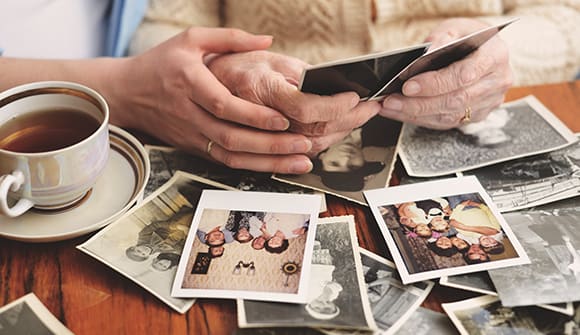Rely on our supply
How can hospitals have cleaning supplies when you can’t find any in stores?
Article Author: Wesley Roberts
Article Date:

Aisle 9 has been empty for quite some time. As soon as COVID-19 hit the United States, shoppers rushed to stores to pick up disinfectants, wipes and hand sanitizer (oh, and toilet paper). As the shelves have been restocked, it’s still difficult to find those prized disinfectant wipes.
So, how do hospitals maintain frequent cleaning when it appears cleaning supplies are in short supply?
“Finding consumer products and hospital-grade products are two entirely different worlds,” explained Maxine Shoemaker, a financial analyst for Strategic Sourcing at Baptist Health. “Hospitals have access to national health care suppliers and can find hospital-grade cleaning and disinfecting products that are manufactured by companies that are different than those consumers are used to seeing in stores.”
No stone unturned
There are also safeguards in place to manage the allocation of supplies to hospitals in emergency situations such as COVID-19. This ensures hospitals have the cleaning and disinfecting supplies it needs to care for its patients, families and staff.
“Though we feel secure with the allocation of products from major distributors, our Strategic Sourcing team has been creative during this time in building up our reserve supplies,” said Shoemaker. “We did a generous amount of research to find new sources and vet leads for the cleaning and disinfecting products we use here at Baptist Health. We began sourcing from suppliers whose distribution to other businesses, like gyms and dental offices, had slowed down due to closures or reduced operating hours.”
7 steps to extra-clean
Not only are health system supplies purchased in bundles, the cleaning processes and supplies are also part of a bundle to ensure research-based practices are followed consistently in cleaning every setting. Baptist Health utilizes the practices and training from Sodexo, a company whose programs are used in over 3,000 hospitals globally.
“We use very specific products that are primarily used in health care settings,” explained Andi Nurcellari, director of Environmental Services at Baptist Health. “Even though you can’t find wipes in retail stores, we still use our Oxivir (similar to bleach) wipes and Defender ES System (chlorine-based) wipes in our facilities. These are single-use wipes that kill pathogens, or organisms that cause disease, within one minute.”
He also credits the increased use of the Xenex® LightStrike ™ germ-zapping robots for extra patient protection. For the rooms of patients being treated for COVID-19, the robot is used before the Environmental Services team enters the room to clean, and is used again when cleaning is complete.
“To ensure every surface in a room has been inspected during the cleaning process, we use a widely adopted, seven-step cleaning process,” said Nurcellari. The procedure includes:
- Removing trash and replacing bed linen
- Dusting in the highest areas
- Wiping surfaces with a disinfectant solution
- Cleaning the restroom
- Dust-mopping the floors
- Damp-mopping the floors
- Thoroughly inspecting the room
Team members who clean in health care settings have frequent training on these steps.
“We have weekly huddles and monthly training with all of our team members, on all shifts,” said Nurcellari.
Even if you don’t see Lysol® or Clorox® wipes at the store for weeks to come, hospitals have unique access to the supplies needed to disinfect and protect you and your loved ones.
Baptist Health is known for quality and safety. To learn more about why Baptist Health is a safe place for care, visit covid19.baptistjax.com/safe-care. To find a primary care physician or schedule an appointment for care you may have delayed during COVID-19, call 904.202.4YOU.



